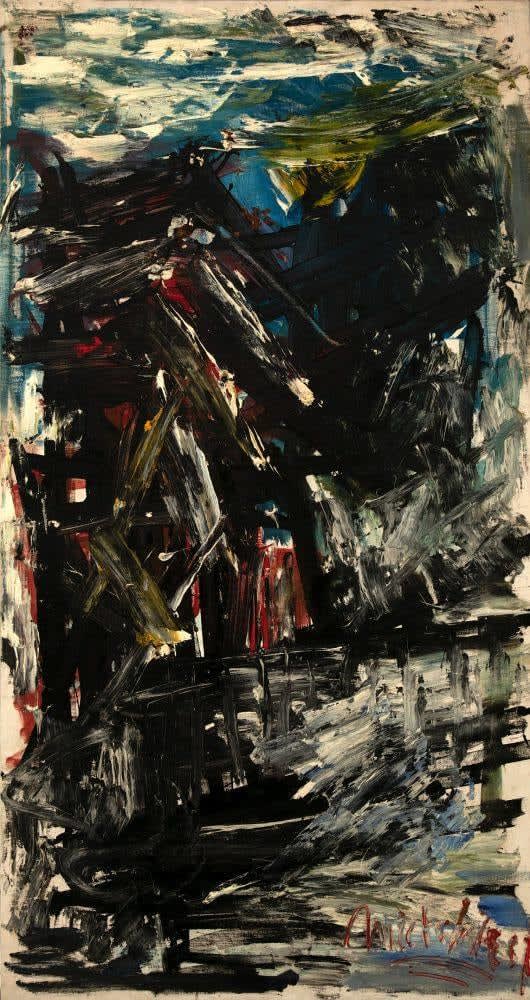Michael Corinne West (born Corinne Michelle West, 1908–1991) was a trailblazing yet underrecognized force in the rise of Abstract Expressionism in New York. A contemporary of Mark Rothko, Willem de Kooning, and Franz Kline, West forged a fiercely intuitive practice that shifted from dense Cubist explorations to sweeping action paintings and later to bold experiments with collage and calligraphic mark-making.
Born in Chicago, she first pursued music at the Cincinnati Conservatory before turning to art, graduating from the Cincinnati Art Academy in 1930. Two years later, she moved to New York, studying painting with Hans Hofmann at the Art Students League and later with Raphael Soyer. During this time, she grew close to Arshile Gorky—serving as his muse and confidante, though she turned down his repeated marriage proposals. Seeking to navigate a sexist art world, West adopted the male name “Michael” in 1941, following Gorky’s advice that her given name sounded too much like a socialite’s.
West’s work drew inspiration from Henri Bergson’s ideas of “living energy” and the existential urgency of post-war art. In her own words from 1946: “The new peace has brought about a world of opening facts—a speed which causes change both of matter and a way of doing things.” She embraced this spirit through powerful brushwork that conveyed movement and emotion.
Throughout the 1940s and ’50s, West exhibited alongside major figures of the New York School, showing at venues like the Pinacotheca Gallery and Manhattan’s Stable Gallery, with solo shows at Uptown Gallery and Domino Gallery in Washington, D.C. Her 1956 painting Space Poetry exemplifies her dynamic commitment to action painting.
In the 1960s and ’70s, her work grew more experimental, incorporating collage, staining, and gestural writing, showcased in solo exhibitions at Granite Gallery, Imaginary Art, and Woman Art Gallery in New York. Although overlooked during her lifetime—overshadowed by male peers—West’s contributions have gained renewed recognition. Today, her paintings are held in collections including the Georgia Museum of Art and the Westmoreland Museum of American Art, cementing her place as a vital voice in American abstraction.

